Our train journey through India’s Golden Triangle brought us to the third point – Jaipur. The capital of Rajasthan, ‘The Land of Kings’, ‘The Pink City’. This incredibly picturesque city rightfully earns all of its titles for its regal palaces, forts, and pink facades with floral details. We spent 4 days in Jaipur, exploring everything it has to offer and all the best things to do. In Jaipur, the pace of life noticeably picks up again after Agra. It is somewhat easier to traverse than Delhi thanks to its grid city plan.
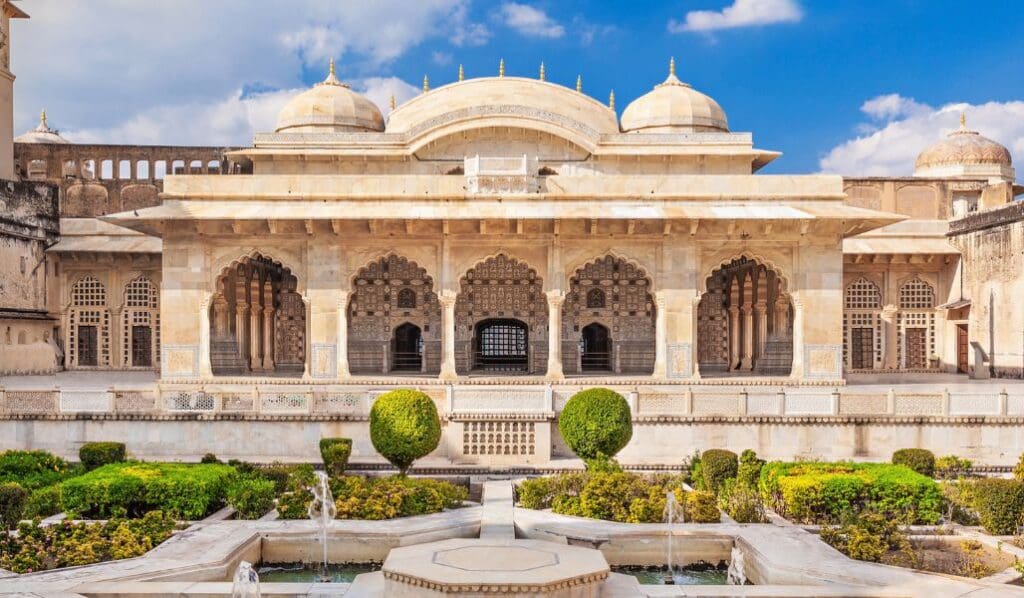
So, first things first – what makes Jaipur special? Jaipur is home to some of India’s most impressive architecture. In addition to unique designs, the city is painted in a stunning shade of pink. Well, some say it’s more like peach or salmon. But that’s what earned Jaipur its epithet when Maharaja Ram Singh ordered buildings to be painted in pink, the color of hospitality to impress the visiting British royalty in 1876. But there is more to the city than just pretty colors and shapes. Read on to find out other reasons to visit Jaipur and the top sights in Jaipur.
Best Sights in Jaipur
Patrika Gate and Jawahar Circle Garden
The architectural fascination with Jaipur begins on the outskirts of the city, near the Jaipur International Airport, where Patrika Gate welcomes visitors into Jawahar Circle Garden, the largest circular garden in Asia. Admiring the intricately decorated entrance takes you on a journey around different parts of Rajasthan with painted depictions on the pillars. Past the breathtaking archways, there is a tranquil park, despite being a giant roundabout, where locals come to seek respite in the rose garden and musical fountain at the center. Surprisingly little known to tourists, this was one of the most unique parks we’ve ever been to and is worth adding to your Jaipur sightseeing itinerary.
Hawa Mahal
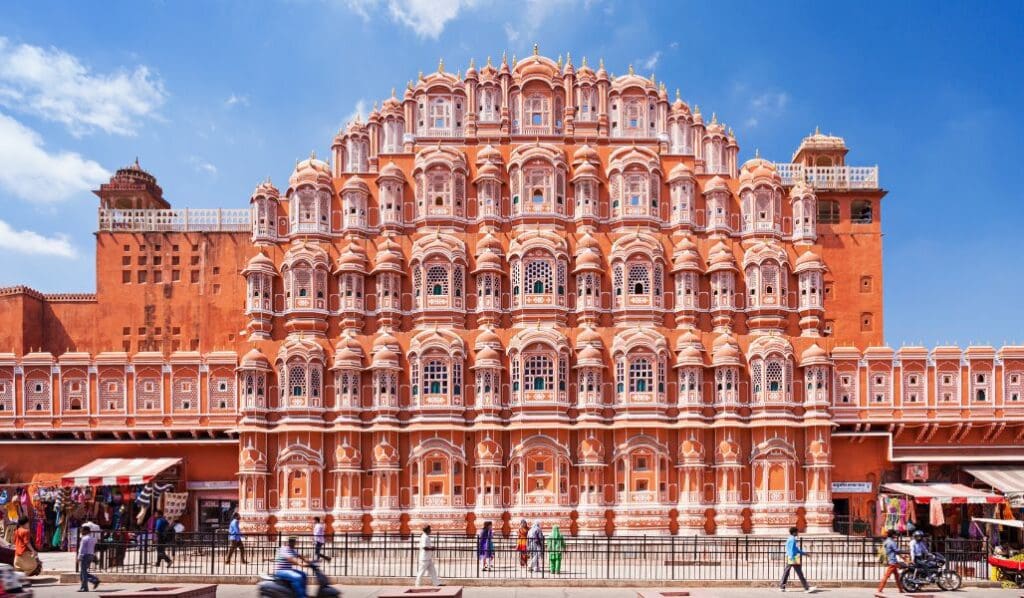
Inside Jaipur’s historic heart is the most iconic of the pink buildings – Hawa Mahal. Translating to ‘Palace of the Winds’, this was a harem that got the name for the 953 tiny windows which were created to conceal the women spectating royal processions from above and provide an ambient and breezy environment for them at the same time. Today, a UNESCO World Heritage Site, it is best admired from one of the rooftop cafes across the street, away from traffic and crowds.
City Palace
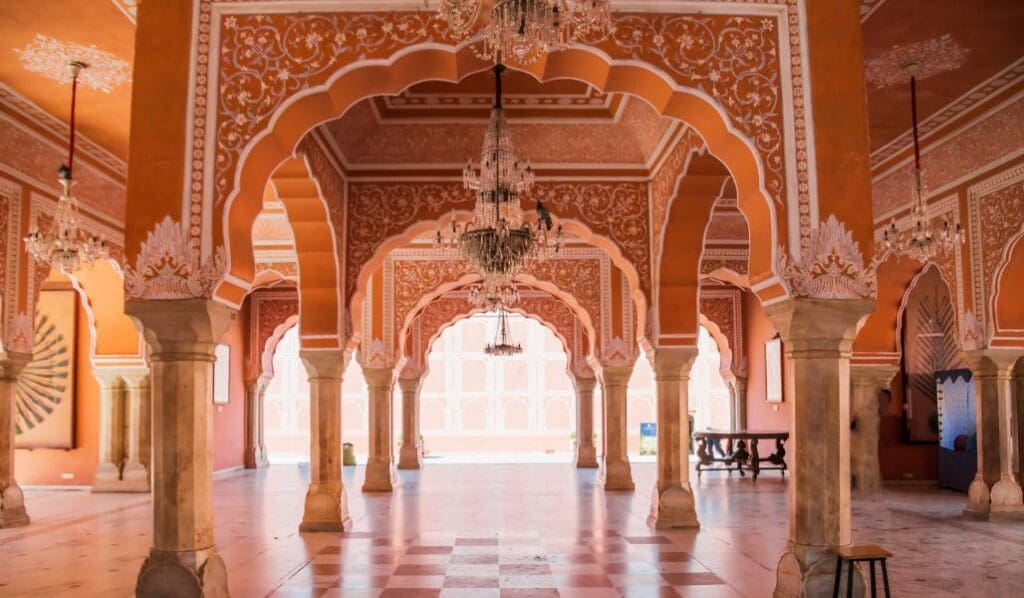
Not far from Hawa Mahal, you will find another one of the best sights in Jaipur – City Palace. An architectural marvel and home to the last ruling royal family to this day. Visiting this major landmark sheds light on the cultural heritage and history of Jaipur. The part that’s open to tourists is quite extensive. Make sure to carve out enough time if you plan on visiting the interior.
Jantar Mantar
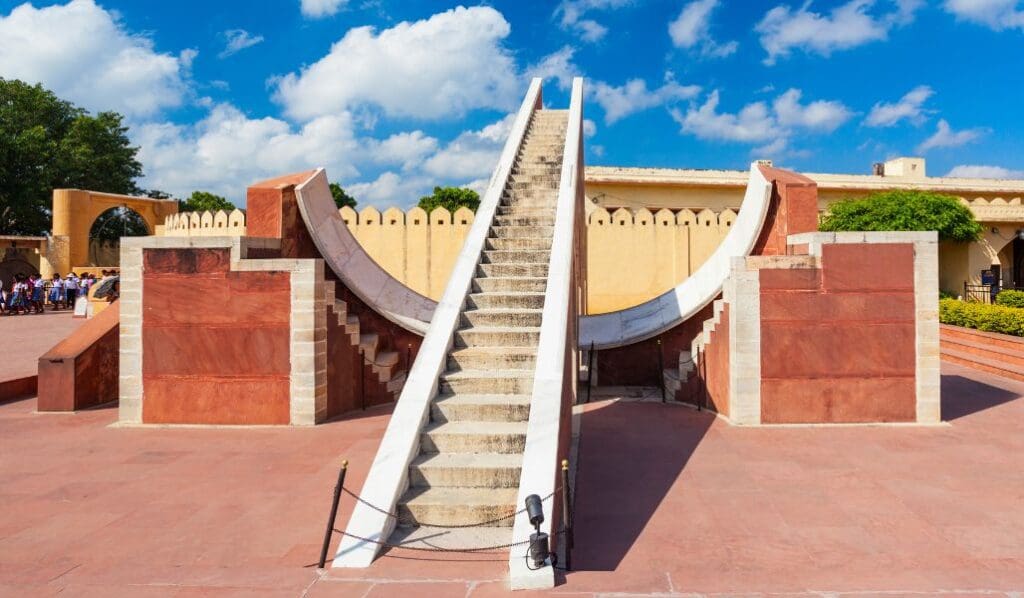
After City Palace, the next stop on your Jaipur sightseeing itinerary should be Jantar Mantar – the Jaipur, India astronomical observatory. If you are a photography or astronomy aficionado, you will be fascinated by this open-air collection of 19 astronomical instruments. One of which is the largest stone sundial in the world – 27 meters tall. Built by the Rajput king Sawai Jai Singh who founded Jaipur, these monuments date back to the 1700s. They are all UNESCO protected.
Amber Palace or Amer Fort
Located on the edge of the city, Amber Palace also known as Amer Fort is another UNESCO World Heritage Site and a sight to behold. Getting there is a bit of an uphill climb. To take advantage of the situation, there is a regular rotation of elephants taking tourists up and down, like golf carts. Instead, we recommend walking or taking a driver to the top. Once at the entrance, prepare yourself for a few hours of walking around the expansive complex with your mouth open. The most impressive room of all must be the hall of mirrors. The palace will continuously wow you room after room with intricate details, imposing arches, and courtyards.
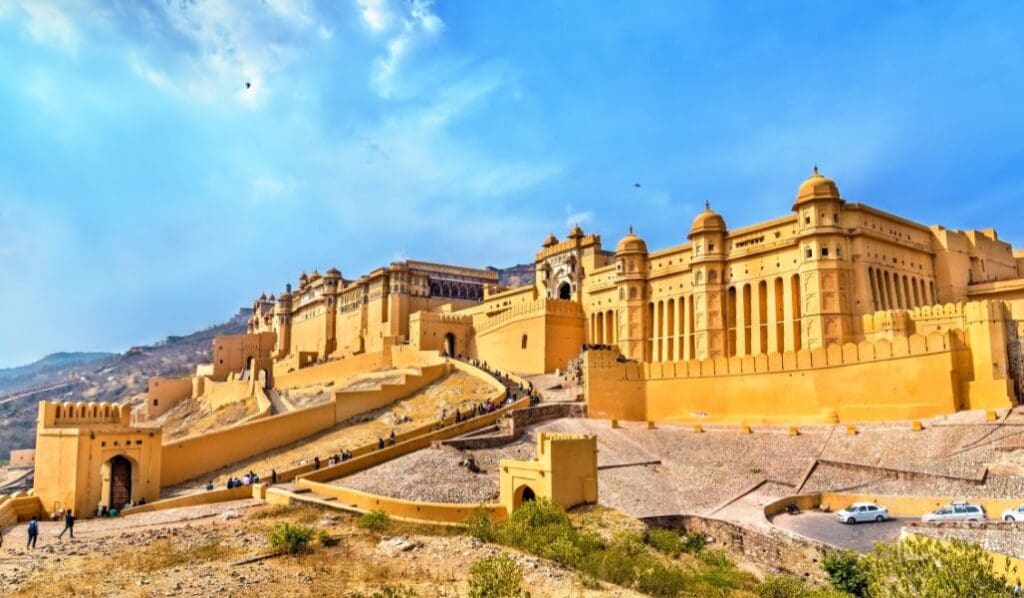
The fort also offers a stunning view of the Maotha Lake, the Great Wall of Jaipur, the surrounding mountains, and Jaipur down below. Be aware of hawkers and go as early in the morning as possible to avoid them and crowds. But make sure you don’t miss this incredible Jaipur attraction.
Panna Meena ka Kund Stepwell and Jal Mahal
North and south of the Amber Palace there are two more historical landmarks to check out. Just above the fort is the historic stepwell called Panna Meena ka Kund. Although there is barely any water left in the well, the exposed symmetry of the steps is evermore mesmerizing. It’s the perfect place to practice your photography skills but do note that going down the steps is prohibited for safety reasons.

South of the fort is the majestic Jal Mahal, also known as the ‘The Water Palace’. Once a vacation house of Majarajas, today it is unfortunately partially submerged and not welcoming visitors. But you can and should admire it from the banks of Man Sagar Lake or from the summit of Nahargarh Fort, which is smaller than Amer Fort but offers spectacular views, especially at sunset.
Visit Vibrant Bazaars
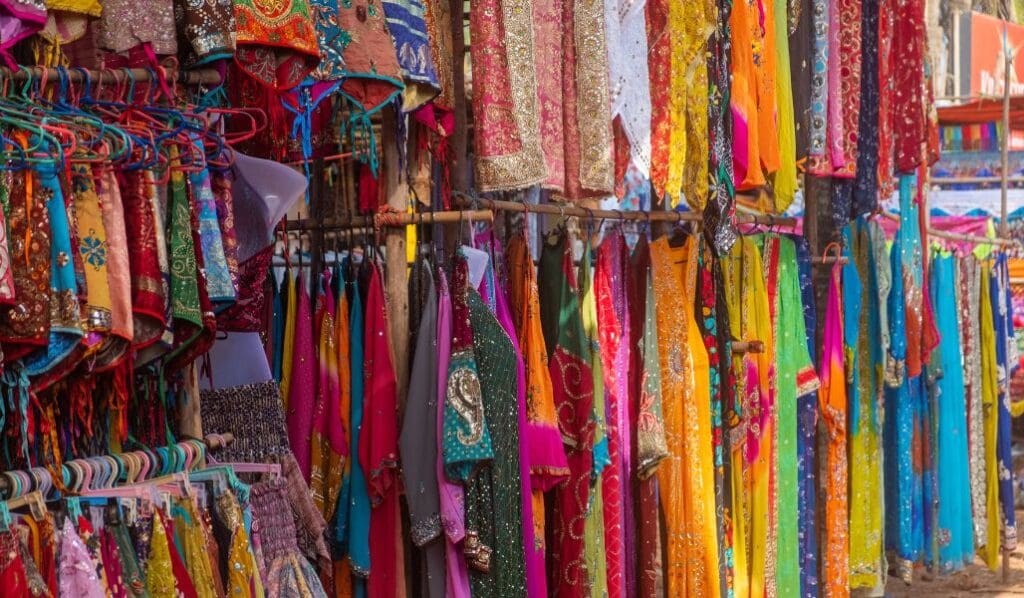
With too many bazaars to cover in 4 days, Jaipur definitely qualifies as a shopping heaven. Whether you are after handmade jewelry, textiles, art, or everything else in between, you will find it in Jaipur’s vibrant bazaars. If it’s jewelry that you are after, head to Johari Bazaar – the best shopping spot in Jaipur that specializes in jewelry. For textiles and camel skin shoes, pop into Bapu and Nehru Bazaars. Should you be on the hunt for unique rugs, you can’t miss Tiropolia Bazaar, which is also the oldest and busiest market in Jaipur, India. You will be able to score even more home décor in Chandpole Bazaar. Even if you don’t buy anything, you are guaranteed to walk away with a better understanding of daily life in Jaipur.
Rajasthani Cuisine
Local cuisine deserves a special mention and stands on its own as a reason to visit Jaipur, India. It is said that the flavor spectrum is dialed up when it comes to food from this region. Curries are punchier and richer, and sweets are sweeter. Yes, we mean sweets and not dessert because oftentimes you get sweets to go with your main and follow that up with a proper dessert after. This is of course due to the harsh climate in the region, limited water, and history, which had locals turning to dairy, spices, and ghee to enhance flavors.
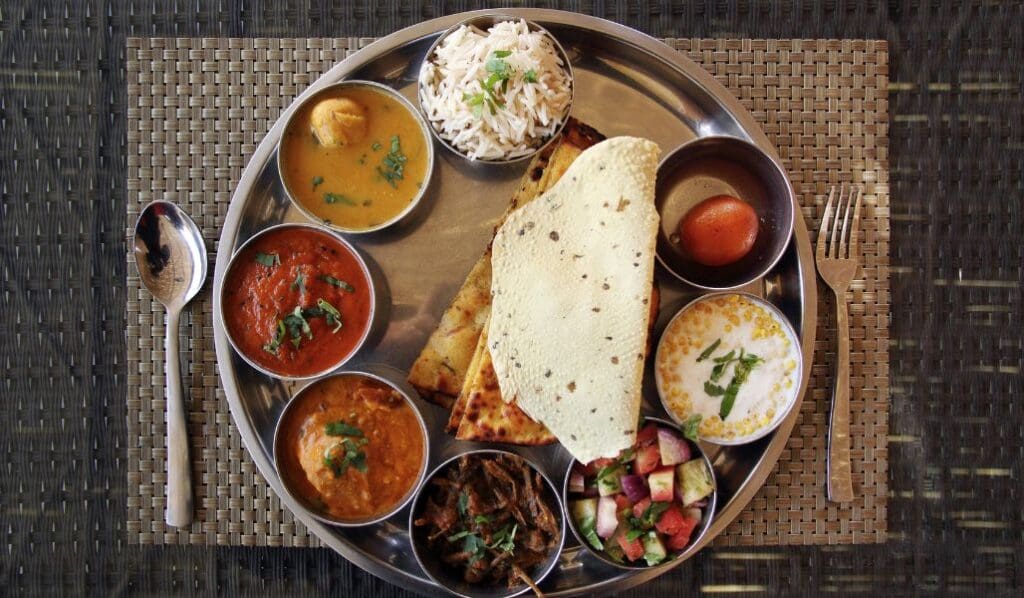
Some must-try dishes include the signature dal baati churma, wheat balls with lentil curry, or if you worked up an appetite, seek out a traditional Rajasthani Thali (like the one at Chokhi Dhani Cultural Village), which is a tray containing all of the most popular specialties, and enjoy ghevar and kulfi for dessert.
Jaipur Street Food Tour
Do yourself a favor and book this Jaipur History Street Food Tour. Not only will you get to try all of the essentials and learn about the history but also see several hidden spots around Jaipur.
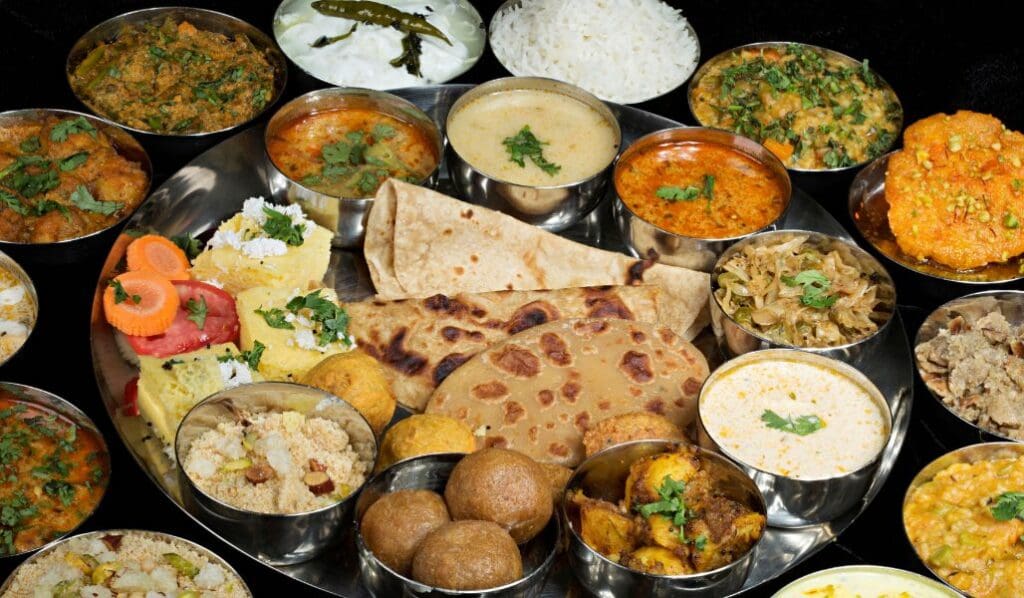
When it comes to ultimate bucket list dining experiences, 1135 AD sets the bar high. It’s an award-winning restaurant that serves traditional Rajasthani delights, and it is located inside the Amber Palace! Surrounded by opulent old-world décor, dining at 1135 AD feels like stepping into the Mahajara’s shoes for the evening. Of course, reserving your table in advance is essential.
As our stay in Jaipur came to an end, we realized that 4 days were not enough to cover everything. But our journey continues to Udaipur. We hope our Jaipur travel guide gave you plenty of reasons to visit. This marvelous city and provided useful itinerary suggestions with our best sights in Jaipur. Let us know what you love the most!
Happy Journeys,
Best Time to Visit Jaipur, India
We have linked a great website to this button showing the weather for this location by the month. Click below to go to Weather-and-Climate.com.
Leave a Reply